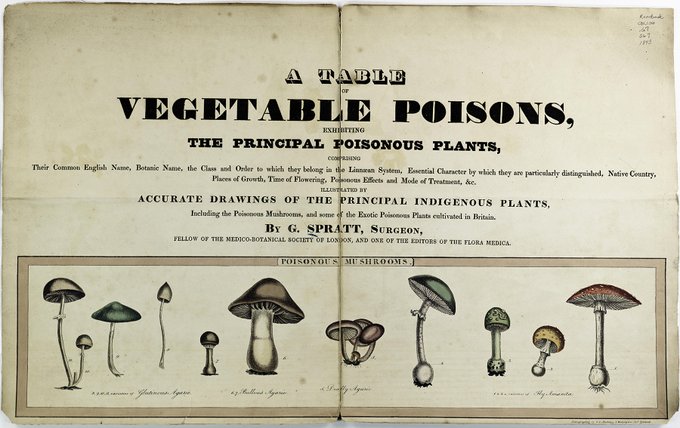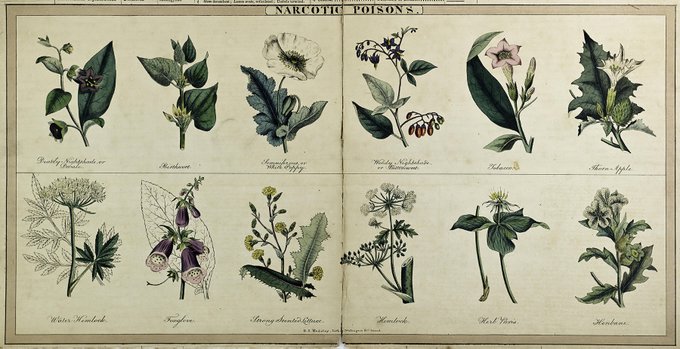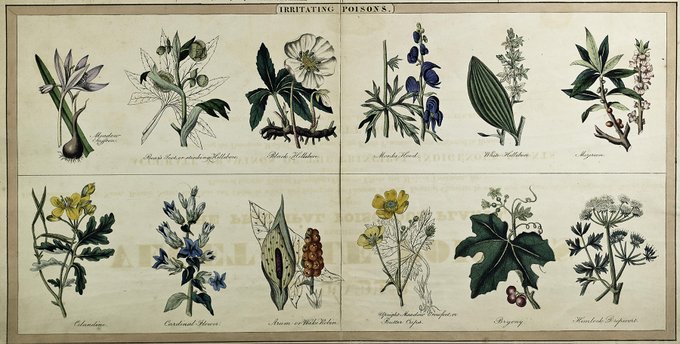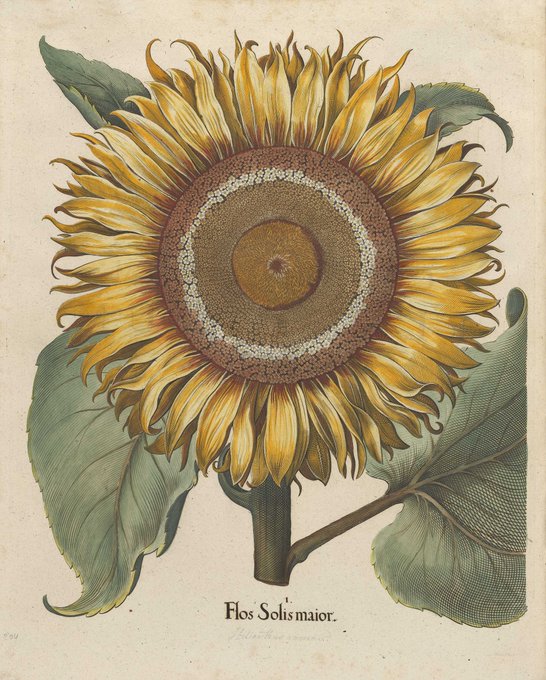FloraFridayのTwitterイラスト検索結果。 52 件中 2ページ目
Botanical illustration and the park: Orchid album :comprising coloured figures and descriptions of new, rare and beautiful orchidaceous plants .......11 vols, BHL/Missouri Botanical Gardens............. #FloraFriday https://t.co/U9o7SObBUG
It's a poisonous #FloraFriday + #FungiFriday! ☠️ 🍄🌼
"A table of vegetable poisons" (1843) describes the characteristics, locales, and effects of poisonous plants & mushrooms found throughout the world. Find it in #BHLib via @mobotgarden ➡️ https://t.co/hkeH2EO3qb
The ☀️ is shining in VA today, so here are two cheerful sunflowers – one nourishing a local pollinator in our formal garden, and one brightening the pages of “Hortus Eystettensis” (Basilius Besler, 1561-1629) in our library. Happy #florafriday🌻! #30daysofflowers #floweroftheday
Happy #FloraFriday! #Orchid hybrid (Cattleya × elegans). #SciArt from Lindenia, v.5 (1889), which was digitized by the Mertz Library of @NYBG for @BioDivLibrary: https://t.co/76dd5pFicC. Explore more from this volume in a newly added #BHLib @Flickr album: https://t.co/tDVQ3xwTDr
#FloraFriday 🌺 🦋🌸 Hardy #Fuchsia (Fuchsia magellanica) attracts hummingbirds and butterflies. #SciArt from Flore des Serres et des Jardins de l'Europe, Vol. 11 (1856), edited by Louis Van Houtte. View in @BioDivLibrary thanks to the @mobotgarden: https://t.co/bfZH8xfziq
Happy #FloraFriday! China Pinks (Dianthus chinensis) #SciArt found in Belgique Horticole, T.9 (1859) by Charles Morren and Edouard Morren. Explore more in @BioDivLibrary with thanks to the Mertz Library of the @NYBG for digitizing: https://t.co/1Fg1Nuti6k
For #FloraFriday we bring you some plates from our favorite book, The #Ferns of Great Britain & Ireland. These life size prints were created using the 18th century nature printing process, which the book author is keen to note is the ONLY accurate type of scientific illustration.
#Orchids (Thunia bensoniae) for this #FloraFriday! #SciArt from The Floral World and Garden Guide, Vol. 14 (1871), edited by Shirley Hibberd. View more in @BioDivLibrary with thanks to the Mertz Library of the @NYBG for digitizing: https://t.co/WmYnGSgDh0
#FloraFriday: Lily of the Palace (Hippeastrum aulicum). #SciArt by William Jackson Hooker for Curtis's Botanical Magazine, Vol. 61 (1834). View more in @BioDivLibrary with thanks to Raven Library of the @mobotgarden for digitizing: https://t.co/tMx4lAIx7S
The last member of the Commelinaceae we have in #Tennessee is Tradescantia (spiderwort). Like Murdannia, these have #flowers that are also subtended by a leaf-like bract & are actinomorphic, grow in umbels or cymes, are blue or white, & have 5-6 fertile stamens. #FloraFriday
#FloraFriday: #Orchids (Laelia superbiens) #SciArt by Sarah Ann Drake for The Orchidaceae of #Mexico and #Guatemala (1843) by Jason Bateman. View more in @BioDivLibrary: https://t.co/5Qr5NKHOEJ
Flip through the pages of 'Flora's lexicon : an interpretation of the language and sentiment of flowers' (1840) 💐 including an outline of #botany & poetical introduction by Waterman, Catharine H. via @internetarchive #FloraFriday https://t.co/UOONXBctBJ
#FloraFriday & #HerNaturalHistory: Elizabeth Twining (1805-1889) created botanical #SciArt for her Illustrations of the Natural Orders of Plants. View in @BioDivLibrary: https://t.co/r8bUxzxOoV #WomeninHistSciArt #WomensHistoryMonth #5WomenArtists #IWD2019 #InternationalWomensDay
🍫Happy #ChocolateWeek! The seeds of the cacao tree (Theobroma cacao) are used to make chocolate. #SciArt by Etienne Denisse for his lavishly-illustrated Flore d’Amérique (1843-46), in #BHLib via @NYBG: https://t.co/BsSdbkap5O #FloraFriday
By publishing his "Deutschlands Flora" in a minute format (measuring only 13-15 cm), Sturm was able to make his German flora, containing 2472 engravings, less expensive & thus available to as many people as possible. Find it in #BHLib: https://t.co/5ivqMo7EOW #FloraFriday
According to the preface of John Hill's "Exotic Botany", dried specimens were reconstituted for illustration by macerating them in warm water. Explore the 2nd ed. (1772) in #BHLib for #FloraFriday via @HarvardLibrary Botany Libraries: https://t.co/1IiNCqBOzY #sciart
Purple #Magnolia (Magnolia liliiflora) for #FloraFriday! #SciArt by William Clark for Richard Morris, Flora Conspicua (1826). View more in @BioDivLibrary with thanks to the Mertz Library of @NYBG for digitizing: https://t.co/6iaryqShDW -- #botany #botanicalart #magnolias
#FloraFriday: Amazon Water Lilies (Victoria amazonica) are white the first night that they open, and on the second night, they turn pink. #SciArt by William Sharp for John Fisk Allen, Victoria regia (1854). Contributed to #BHLib by @mobotgarden: https://t.co/KhrKdfDWft
#FloraFriday: Papayas (Carica papaya) are described as treatments for parasitic worms in the digestive system in Flore Pittoresque et Médicale des Antilles, Vol. 1 (1821) by Michel Etienne Descourtilz with #SciArt by Jean-Theodore Descourtilz. Via @NYBG: https://t.co/Goq6XaQaBU
Britton & Rose’s "The Cactaceae" (1919-1923) is an early definitive taxonomic work on the family Cactaceae. It features stunning #SciArt by @NYBG artist Mary Emily Eaton. Explore the work in #BHLib via NYBG: https://t.co/YI3ODY5TRB #FloraFriday #BotanicalArtWorldwide














































